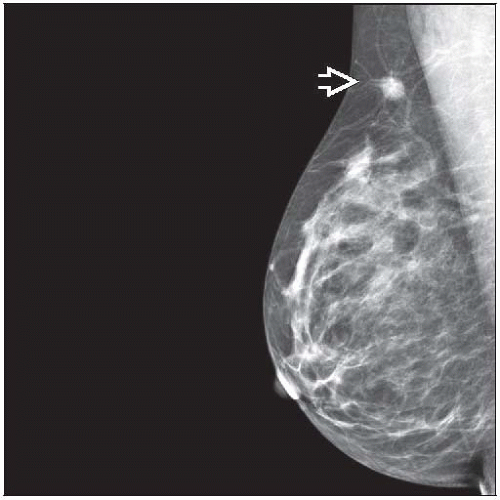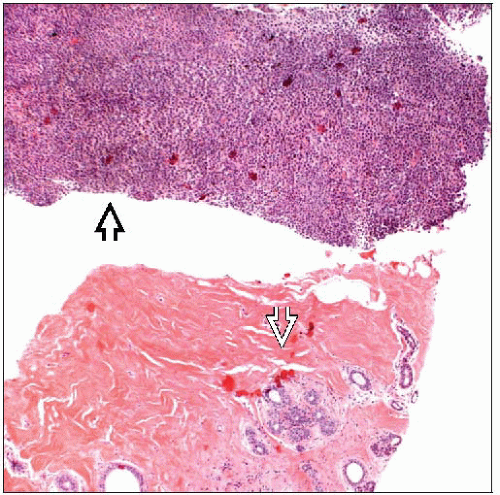Metastases to the Breast
Key Facts
Clinical Issues
Metastases to the breast are < 3% of all breast malignancies
Most common presentation is as palpable breast mass
In 70-80% of cases, patient is known to have another malignancy
In 20-30% of cases, breast metastasis is 1st indication the patient has cancer
In majority of cases, breast surgery and lymph node evaluation are not necessary
Therefore, it is very important not to mistake metastasis for primary breast carcinoma
Outcome is generally poor, as metastasis to the breast is manifestation of disseminated systemic disease
Microscopic Pathology
Embryonal rhabdomyosarcoma is most common type of metastasis to the breast in children
Some affected children will have Li-Fraumeni syndrome
Malignant melanoma is most common type of metastasis to the breast in adults
Prostate carcinoma is most common type of metastasis in men
Wide variety of other tumor types have been reported, including lung, ovarian, gastric, colon, and carcinoid tumor
Top Differential Diagnoses
Primary breast carcinoma
Lymphoma
TERMINOLOGY
Definitions
Metastatic tumors to the breast from different primary sites
CLINICAL ISSUES
Presentation
Metastases to the breast comprise < 3% of all breast malignancies
Most common presentation is palpable breast mass
Less common presentations are mass on imaging (about 10% with calcifications) or inflammatory carcinoma
Axillary and other regional lymph nodes are often enlarged
In 70-80% of cases, patient is known to have another malignancy
Metastases to the breast typically occur about 1 year after initial diagnosis
In 20-30% of cases, breast metastasis is 1st indication the patient has cancer
Many types of metastases are difficult to distinguish from primary breast cancer
Metastasis should be considered if cancer is negative for ER, PR, and HER2 and lacks in situ component
However, majority of such cancers will prove to be primary breast carcinomas
Treatment
Breast surgery to remove metastasis and lymph node evaluation generally do not improve outcome and are not performed
Therefore, it is very important to distinguish metastases from primary breast carcinomas
Systemic treatment depends on type of metastatic cancer
Prognosis
Outcome is generally poor, as metastasis to the breast is manifestation of disseminated systemic disease
IMAGE FINDINGS
General Features
Most metastases present as circumscribed or ill-defined masses
A few present as irregular masses
Calcifications may be present (e.g., in papillary serous carcinomas)
Metastases may be present in adipose tissue near chest wall
Multiple masses may be present in 1 or both breasts
No specific features to distinguish primary carcinoma from metastasis
MACROSCOPIC FEATURES
General Features
Majority of metastases are diagnosed by core needle biopsy and not excised
Only gross feature that would identify metastatic cancer would be black pigmentation in melanoma
Stay updated, free articles. Join our Telegram channel

Full access? Get Clinical Tree







